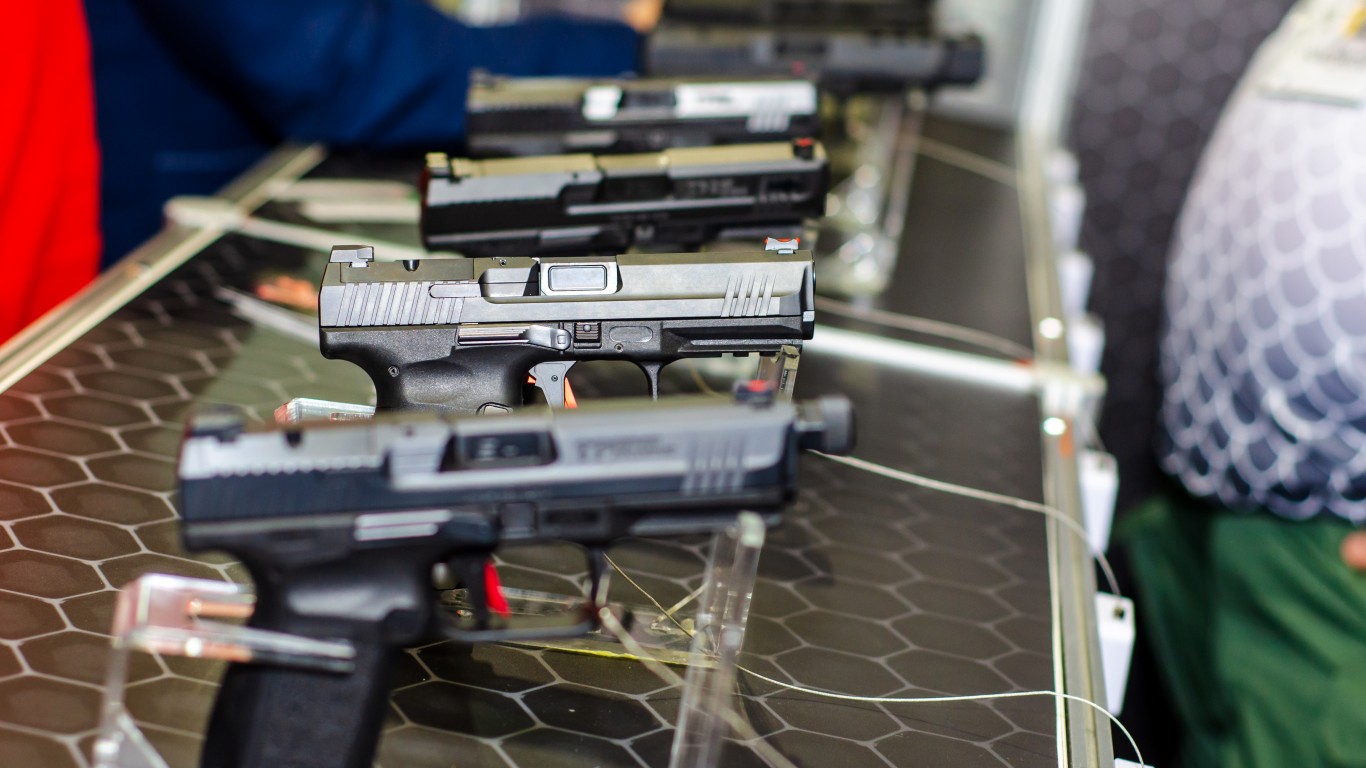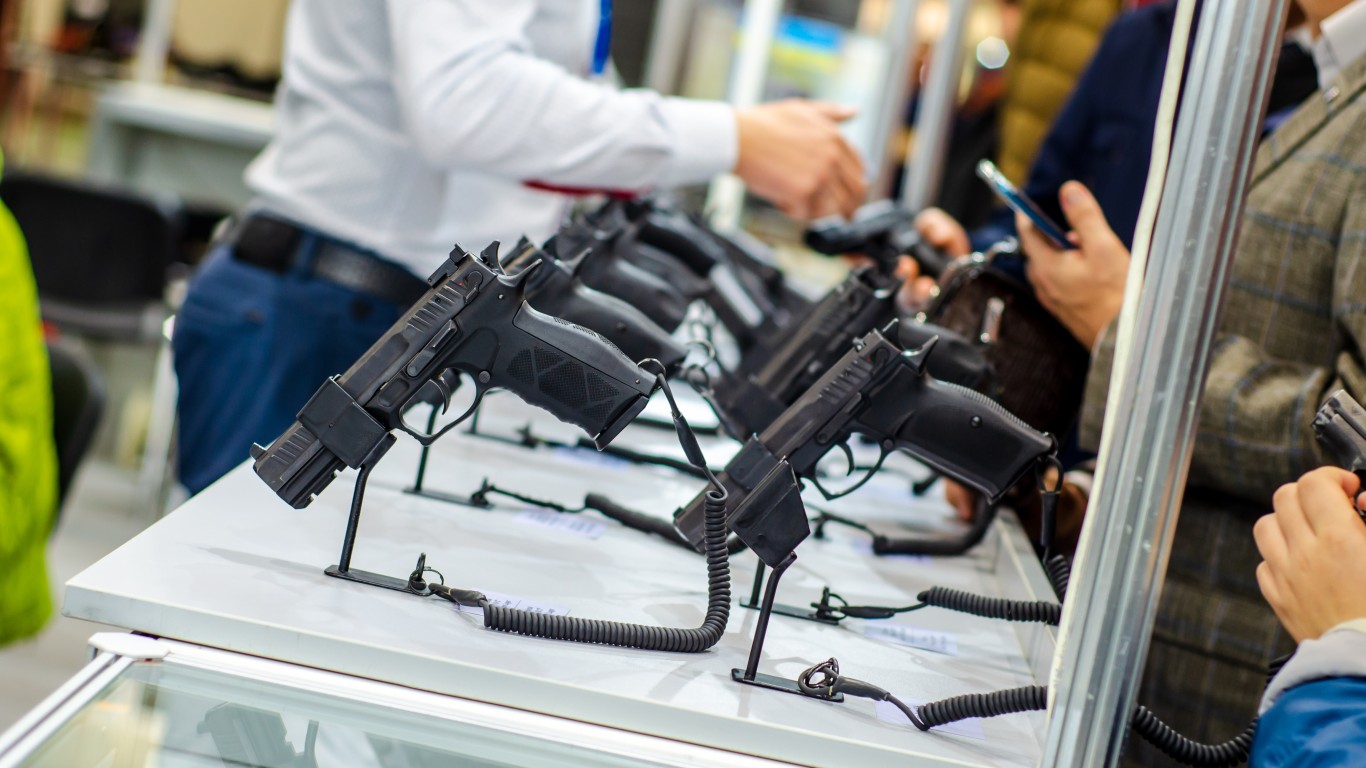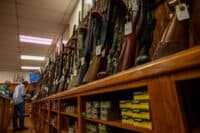
Energy drinks are some of the fastest-growing products in the beverage industry. These drinks typically contain caffeine, amino acids, herbs, and vitamins. They are marketed as a quick and easy way to boost your energy when you’re feeling sluggish. However, while these drinks may temporarily make you feel like a superhero, many of them are super unhealthy. (Here is a list of 20 other foods and drinks that are not as healthy as they seem.)
The National Library of Medicine notes that frequent consumption of energy drinks can lead to insomnia, stress, and depressive moods in children and adolescents. In adults, overindulgence in these beverages can cause insomnia, jitteriness/restlessness/shaking hands, and gastrointestinal upset. Energy drinks can also be harmful to the cardiovascular system and liver. Mixing energy drinks with alcohol can exacerbate these problems.
Despite the long-term health implications, the short-term energy boost from these drinks continues to fuel their popularity, especially among younger generations. Young adults from 18 to 34 years old are the primary consumers of energy drinks, but one-third of teens also drink them regularly.
Are All Energy Drinks Bad For You?
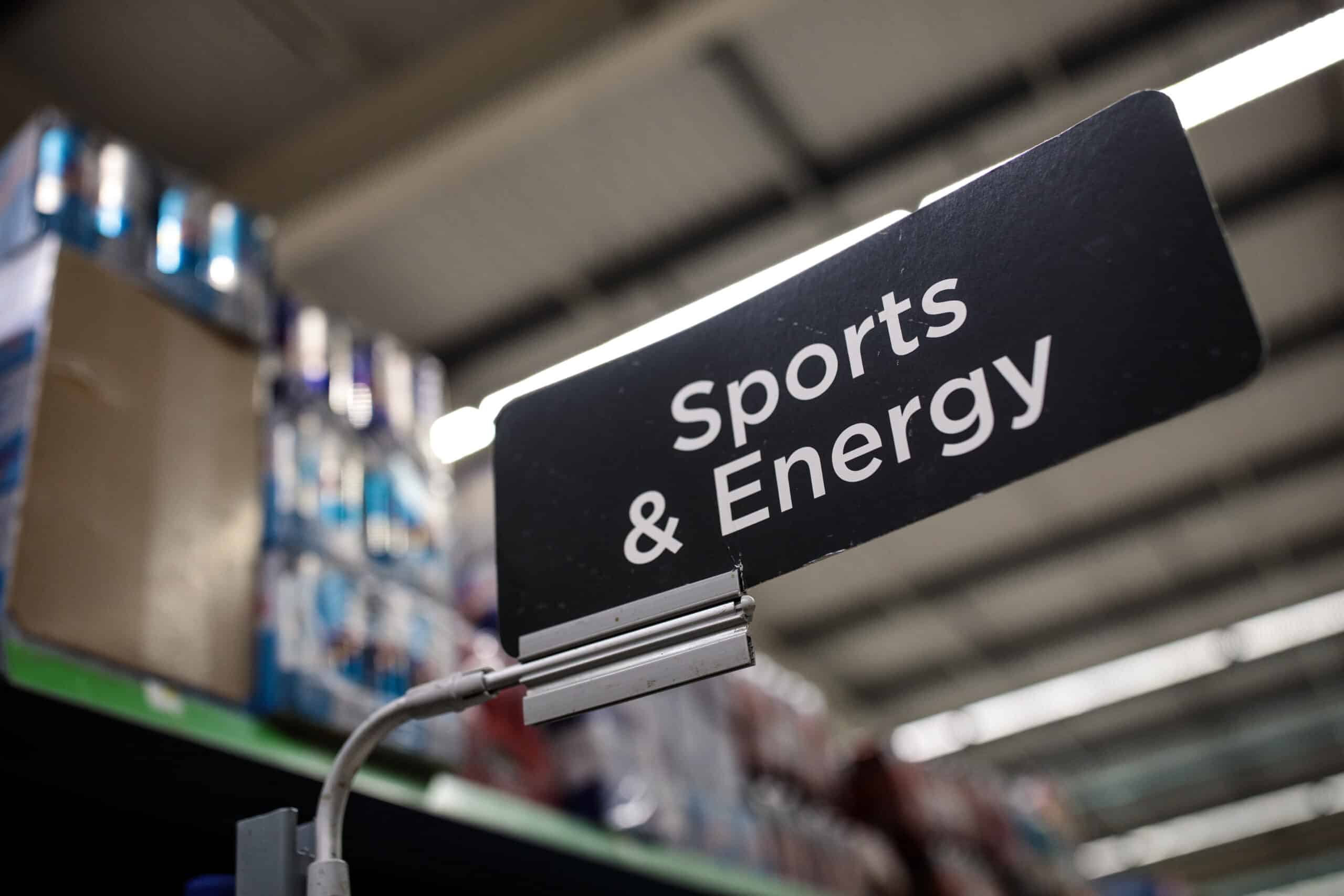
It must be noted that not all energy drinks are created equal. There are healthier alternatives available (although overindulging in almost any energy drink can have a deleterious effect on your health). Some of the better options on the energy drink market include Zoa, Celsius, Guayakí Yerba Maté, and Nuun (dissolving tablets). The healthiest thing you can do, of course, is to eat natural energy-boosting foods such as nuts, lean proteins, whole grains, and complex carbohydrates. However, if you need a little extra pep once in a while, these energy drinks are far better choices than many of their more well-known competitors.
So, if those are some of the best energy drinks available today, which ones are the worst? To answer that question, 24/7 Wall St. consulted the ingredient labels of a wide variety of energy drinks. When the amount of caffeine was not listed on a beverage’s label, we consulted Caffeine Informer for the information. We only evaluated the original and/or most popular flavor of each energy drink.
Caffeine and Sugar
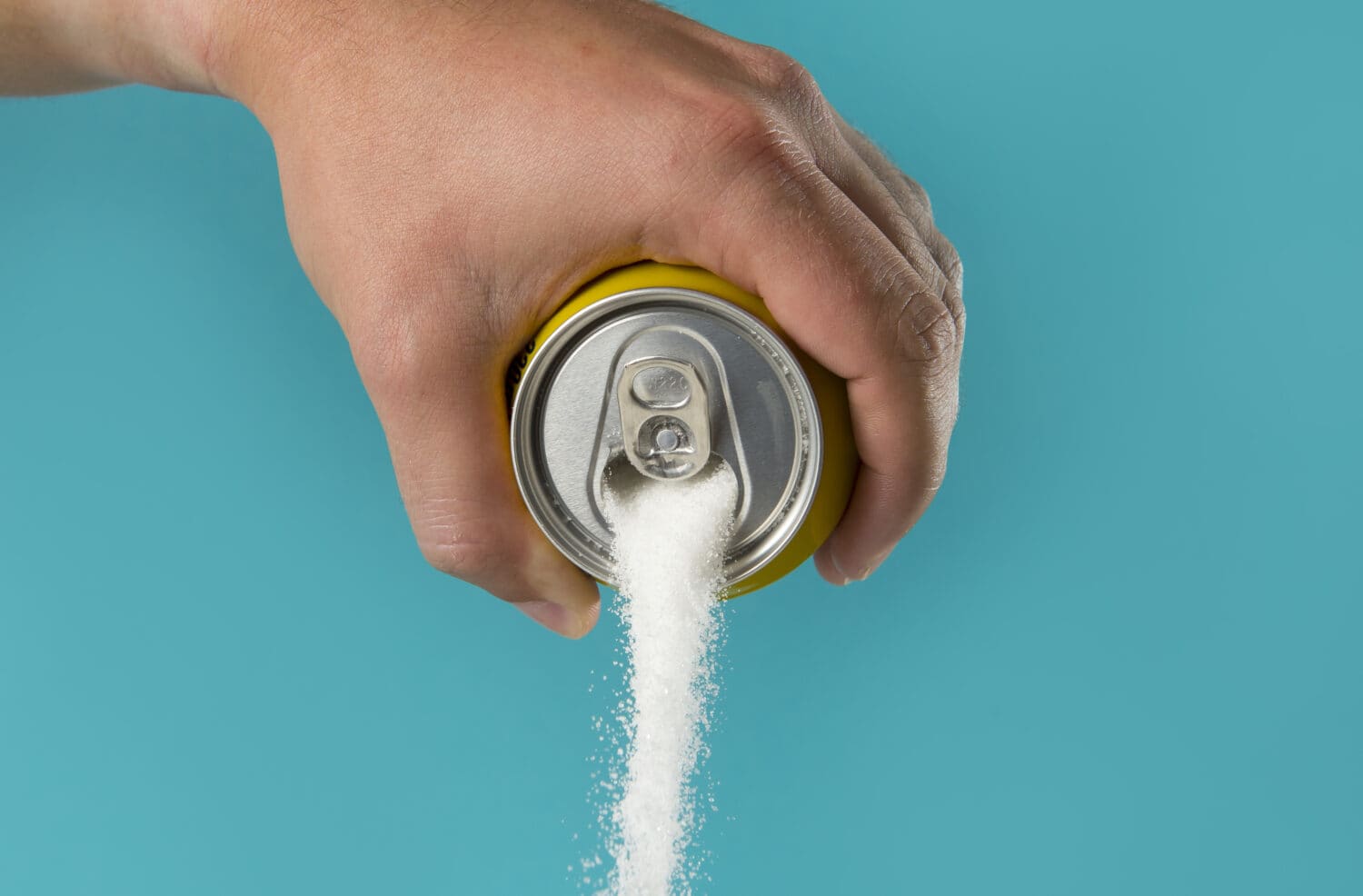
The following drinks contain excessive amounts of caffeine, sugar, and/or other ingredients that can be detrimental to the consumer’s health. With new energy drink brands appearing all the time, no list of this nature can be comprehensive. Consumers are advised to review the nutritional label of any energy drink before making a purchase.
The energy drinks on this list are not only some of the most popular, but they are also among the most unhealthy. As you consider the ingredients of these drinks, some additional perspective is probably necessary. For example, the American Heart Association recommends no more than 36 grams of sugar for men and 25 grams for children, teens, and women each day. The Food and Drug Administration (FDA) recommends a daily caffeine intake under 400 mg for adults. Keep those numbers in mind as you examine the amounts found in some of America’s most popular energy drinks.
6. Bang Energy

- Size: 16 Ounces
- Calories: 0
- Caffeine: 300 mg
- Sugar: 0 grams
Bang Energy is difficult to place on this list. We included it at #5 because it is calorie and sugar-free, unlike the sugar-laden energy drinks to follow. It should be noted that this drink is artificially sweetened, though, and that comes with its own health concerns. But, all in all, it is likely healthier than the insanely sugared-up drinks that follow.
However, while Bang Energy contains no sugar, it is absolutely loaded with caffeine. It features nearly double the amount of caffeine as the other drinks on this list. At 300 mg, Bang Energy contains the same amount of caffeine as three cups of coffee. Yes, it’s still within the permissible limits from the FDA, but that 400 mg recommendation is for the entire day. When you chug a Bang Energy drink, you’re ingesting 300 mg at one time. That much caffeine all at once is never a good idea. It can cause jitters and anxiety. For those who are more sensitive to caffeine, it could even cause nausea, heart palpitations, and vomiting.
On the plus side, the caffeine in Bang Energy is derived from coffee beans and is not produced synthetically. That, combined with the lack of sugar makes it a better choice than the rest of the energy drinks on this list. To put it simply, Bang Energy is the best of the bad options. If you’re determined to choose an energy drink from this list, make it this one. But any of the healthier options listed earlier would be a far better choice.
5. Red Bull
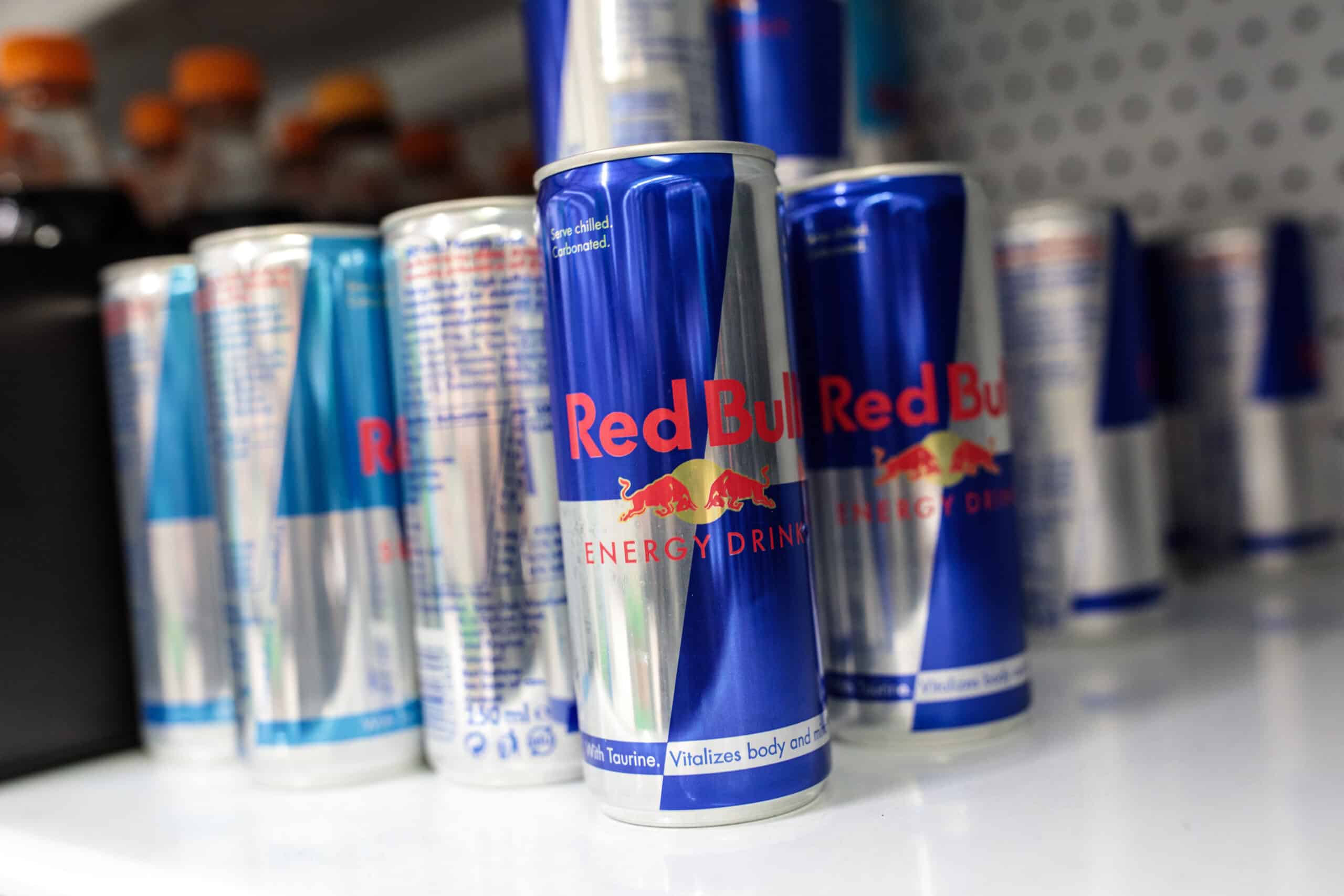
- Size: 16 Ounces
- Calories: 220
- Caffeine: 151 mg
- Sugar: 52 grams
There is a lot of sugar in this energy drink. The label on a 16-ounce can of Red Bull can be misleading, though, because consumers may not notice the serving size. There are two servings in each 16-ounce can. It’s questionable whether anyone who purchases a can of Red Bull only drinks half of it.
Like other energy drinks on this list, a 16-ounce can of Red Bull contains excessive levels of B vitamins. Many people receive the necessary B vitamins from their diet, making this energy drink even more unnecessary.
4. NOS
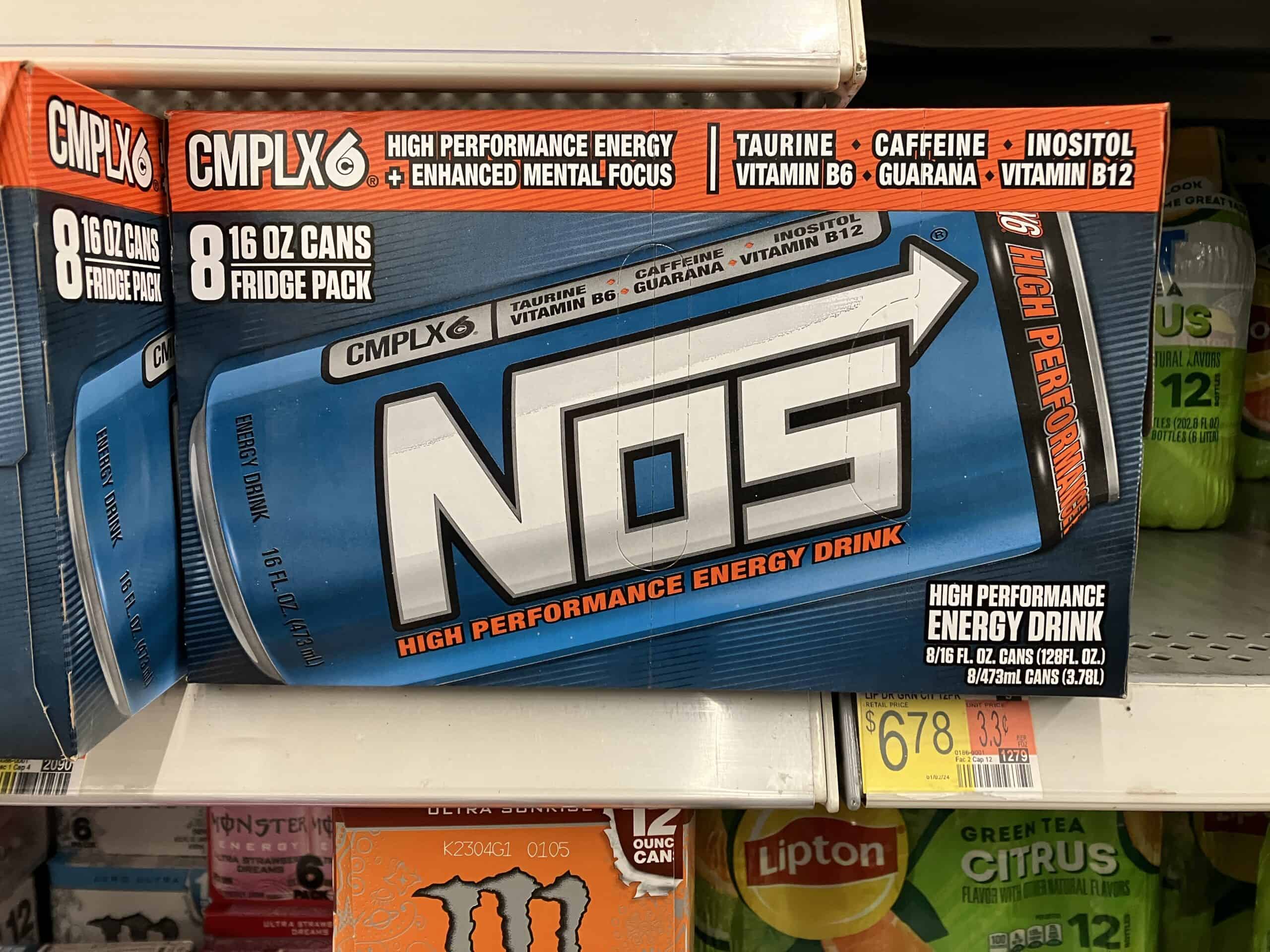
- Size: 16 Ounces
- Calories: 210
- Caffeine: 160 mg
- Sugar: 53 grams
NOS is named after a brand of nitrous oxide. In racing, the gas is used to provide more oxygen to the engine during combustion. That increases the injection of fuel and allows the engine to produce more power.
The energy from NOS comes from a high dose of caffeine and a very large amount of sugar. Is it effective in producing energy in the short term? Yes, some people do feel energized after drinking a NOS. However, that jolt of energy is almost certain to be followed by a crash. The same could be said for most other energy drinks on this list.
3. Monster
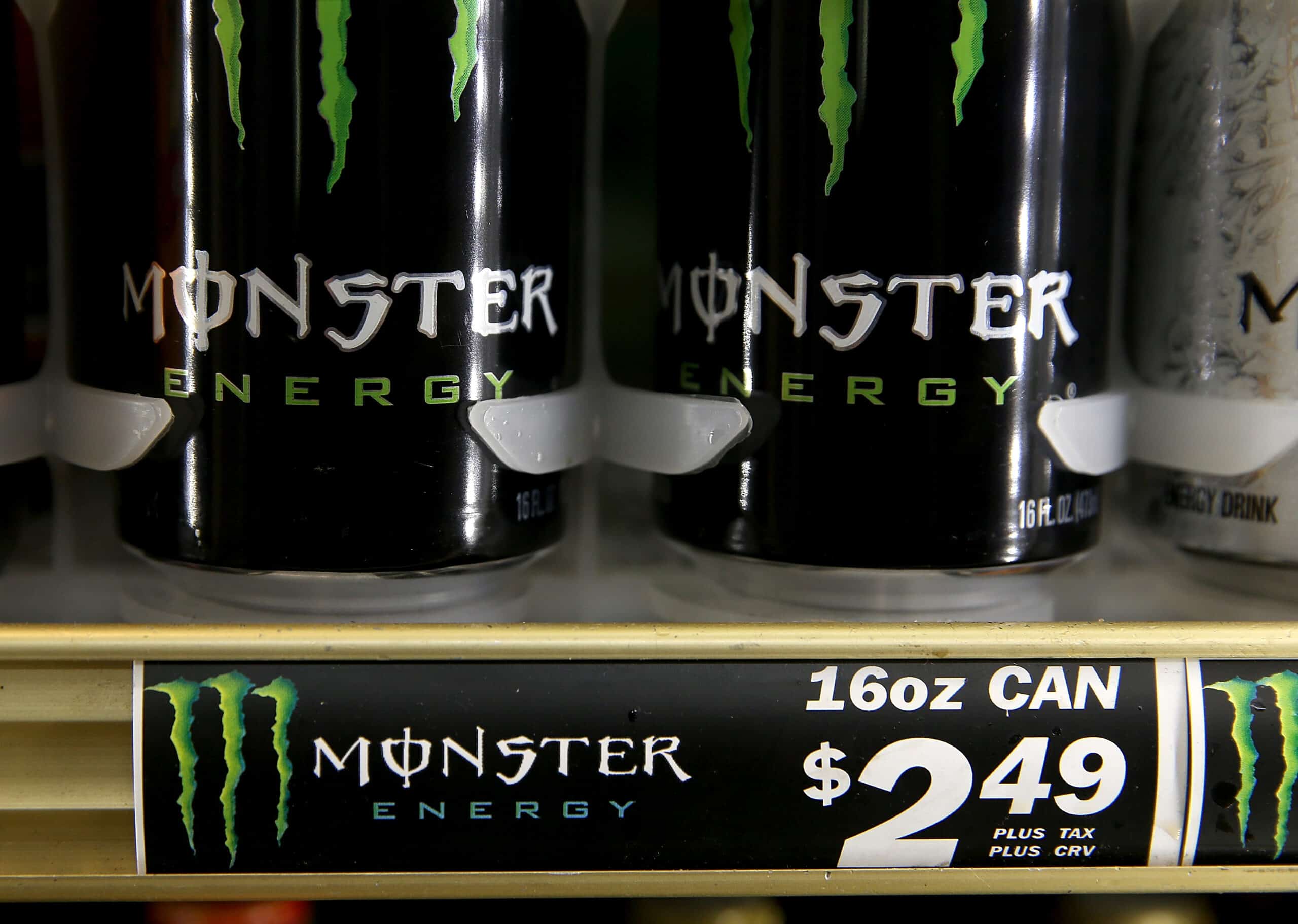
- Size: 16 Ounces
- Calories: 230
- Caffeine: 160 mg
- Sugar: 54 grams
One 16-ounce can of Monster contains one-and-a-half times the recommended daily sugar for men and over twice the recommended amount for children, adolescents, and women.
One Monster contains 500% of the recommended daily dose of Vitamin B12, as well as other B vitamins that are well above the recommended daily amounts. While that would seem to be a good thing, the truth is that the human body can only absorb so much B12 and other B vitamins. The rest is lost through urination. There is little evidence that excessive amounts of B vitamins are harmful. However, consumers may see the super high vitamin levels found in Monster while overlooking the real issues with the beverage. The same could be said for most of the other energy drinks on this list.
At least Monster is upfront about the ingredients in its products, though. Other energy drinks attempt to conceal the actual amount of caffeine and sugar by dividing one can into multiple serving sizes.
2. Full Throttle
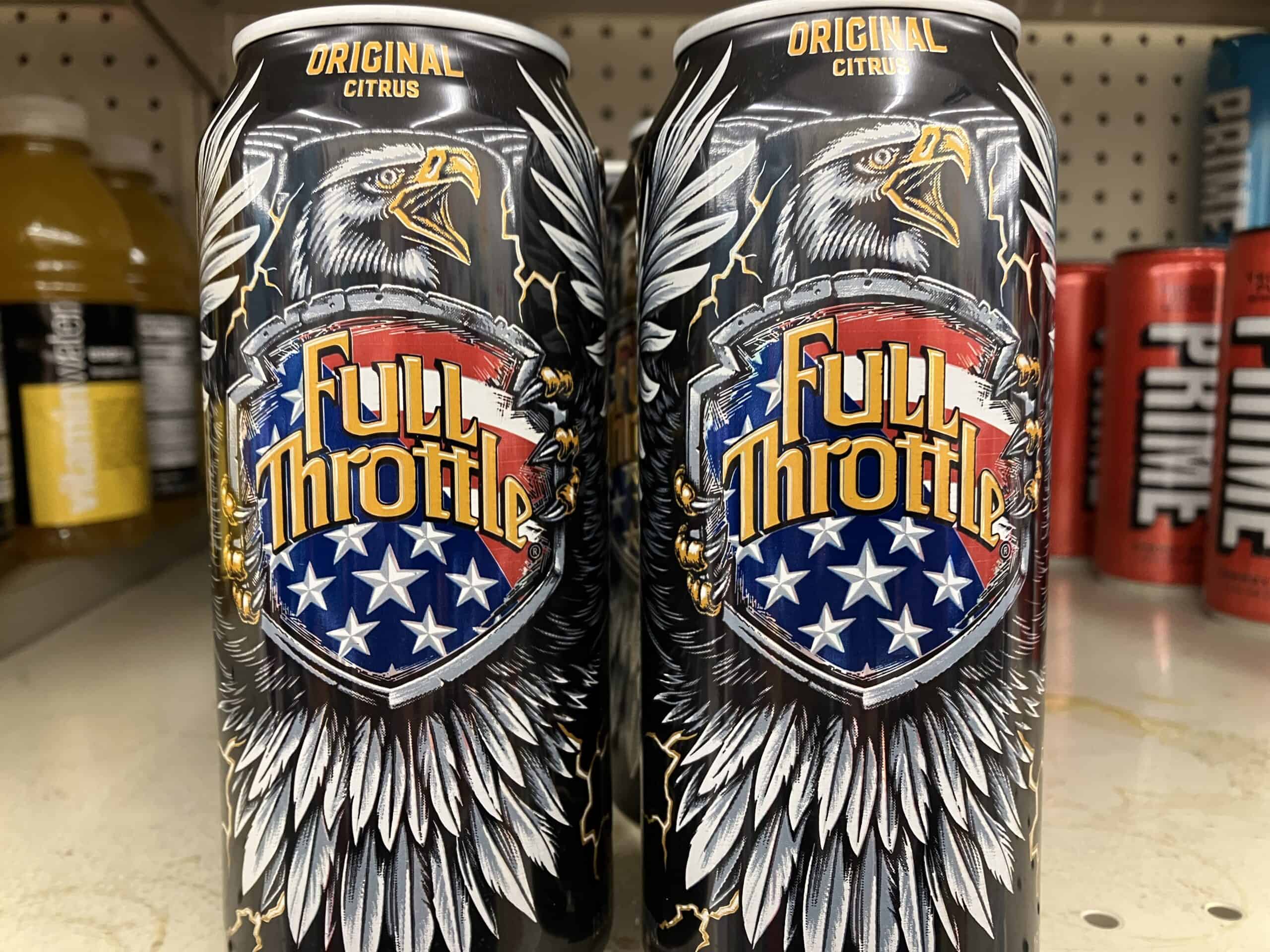
- Size: 16 Ounces
- Calories: 220
- Caffeine: 160 mg
- Sugar: 58 grams
Full Throttle certainly goes pedal to the metal when it comes to sugar with 58 grams in a 16-ounce can. The sugar mostly comes from high fructose corn syrup, one of the sweeteners many experts believe have greatly contributed to the obesity epidemic in the U.S.
Like Red Bull, Full Throttle also attempts to hide the actual amount of sugar in this drink by dividing one 16-ounce can into two servings on the label. Don’t be fooled.
1. Rockstar
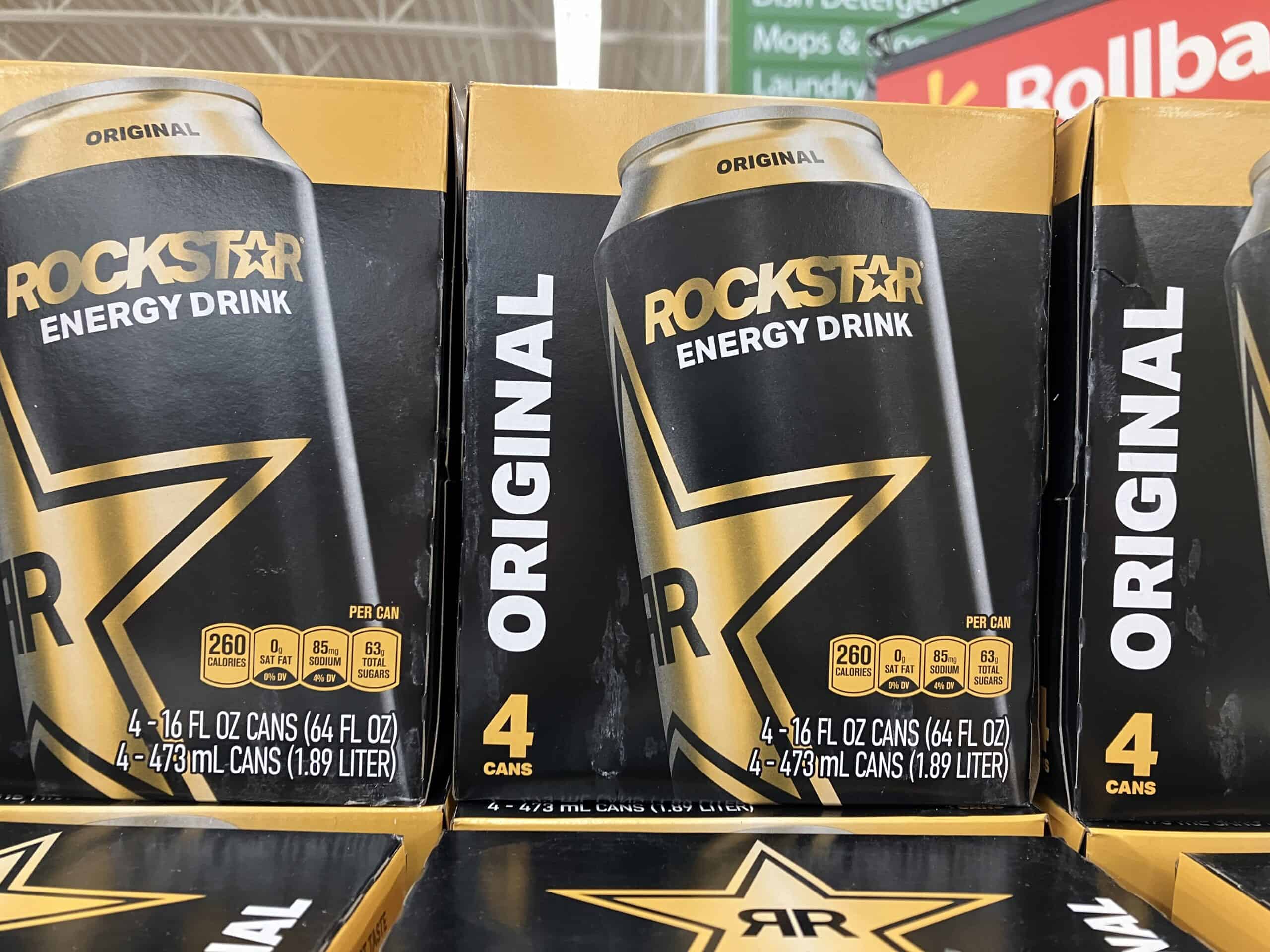
- Size: 16 Ounces
- Calories: 270
- Caffeine: 160 mg
- Sugar: 63 grams
Rockstar is a horribly unhealthy energy drink. One 16-ounce can of Rockstar contains a whopping 63 grams of sugar. That is 1 ¾ times the recommended daily amount for men and over 2 ½ times the recommended amount for children, teens, and women.
For a little additional perspective, consider this: one 16-ounce can of Rockstar contains more sugar than 2 ⅓ Snickers bars.
Rockstar also contains more calories than any other drink we evaluated, which is not surprising given the exorbitant amount of sugar it contains.
The Average American Has No Idea How Much Money You Can Make Today (Sponsor)
The last few years made people forget how much banks and CD’s can pay. Meanwhile, interest rates have spiked and many can afford to pay you much more, but most are keeping yields low and hoping you won’t notice.
But there is good news. To win qualified customers, some accounts are paying almost 10x the national average! That’s an incredible way to keep your money safe and earn more at the same time. Our top pick for high yield savings accounts includes other benefits as well. You can earn up to 3.80% with a Checking & Savings Account today Sign up and get up to $300 with direct deposit. No account fees. FDIC Insured.
Click here to see how much more you could be earning on your savings today. It takes just a few minutes to open an account to make your money work for you.
Our top pick for high yield savings accounts includes other benefits as well. You can earn up to 4.00% with a Checking & Savings Account from Sofi. Sign up and get up to $300 with direct deposit. No account fees. FDIC Insured.
Thank you for reading! Have some feedback for us?
Contact the 24/7 Wall St. editorial team.
